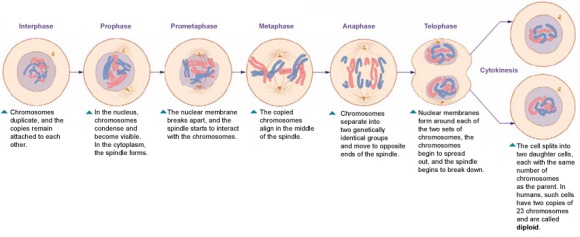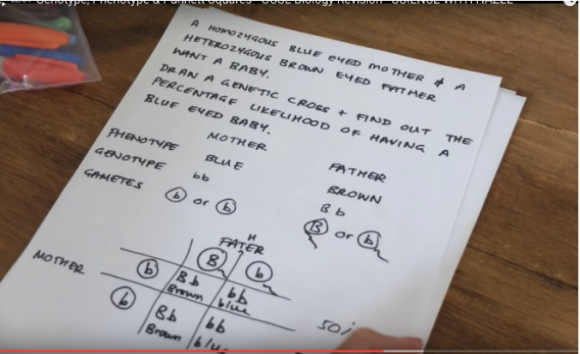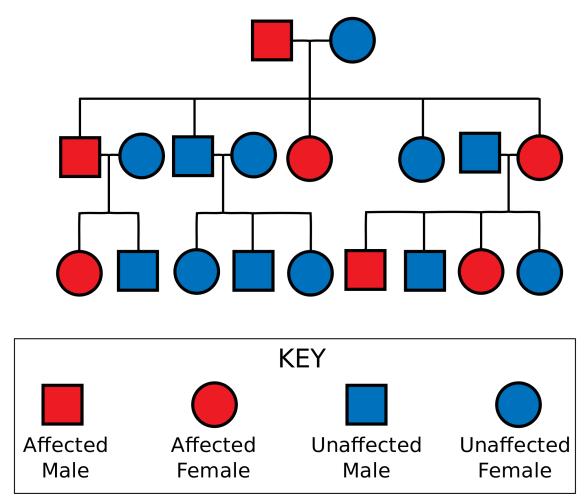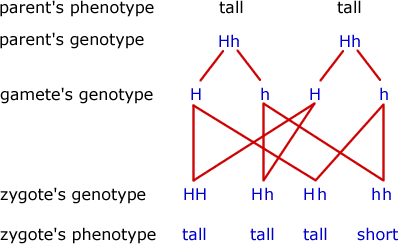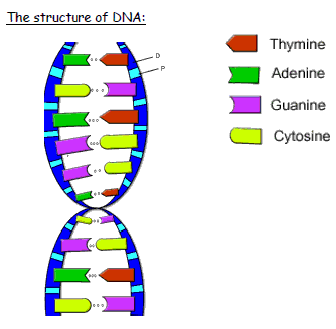Mitosis – cell division resulting in two, genetically identical diploid daughter cells.
- All cells of the body (except from sex cells) are formed by mitosis from the zygote
- In mitosis, each copy of each chromosome is made before the cell divides.
- During the division, each daughter cell receives a copy of each chromosome
- Mitosis is important for the replacement of cells.
- Eg. skin cells, gut cells and blood cells.
- In cancer, the normal control of mitosis is lost, so the cells divide very rapidly and repeatedly.
